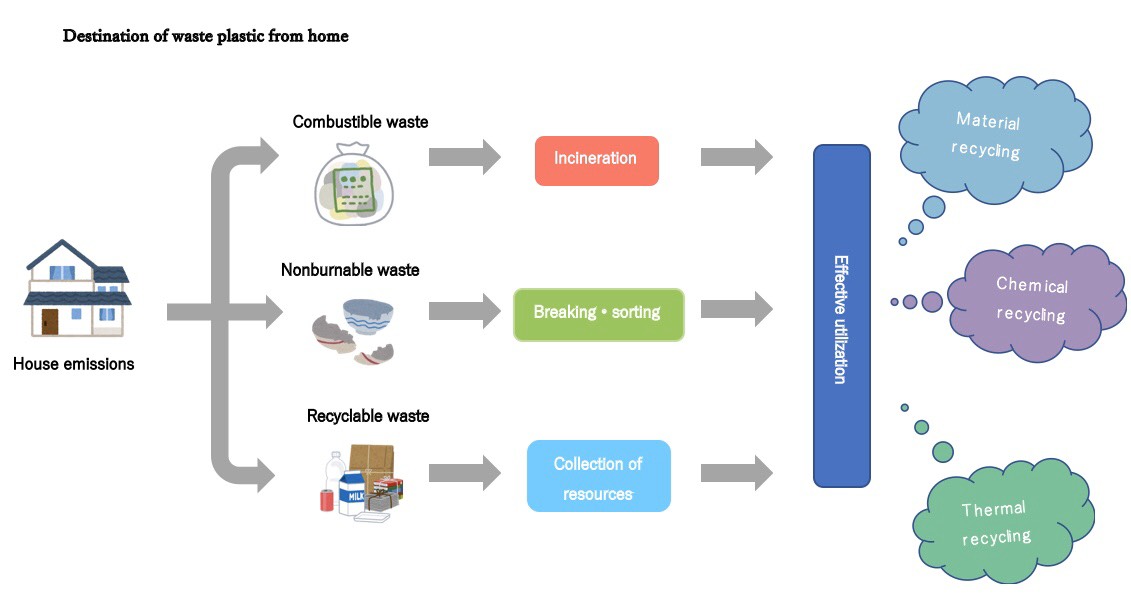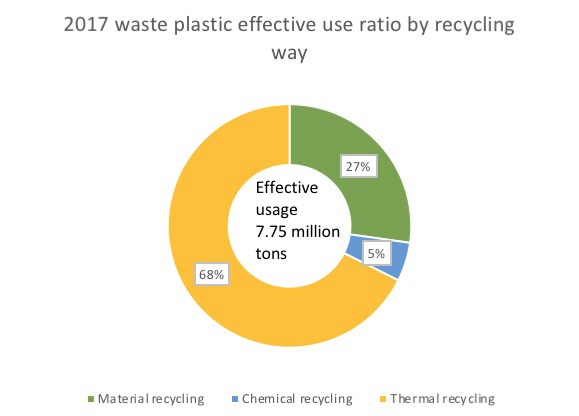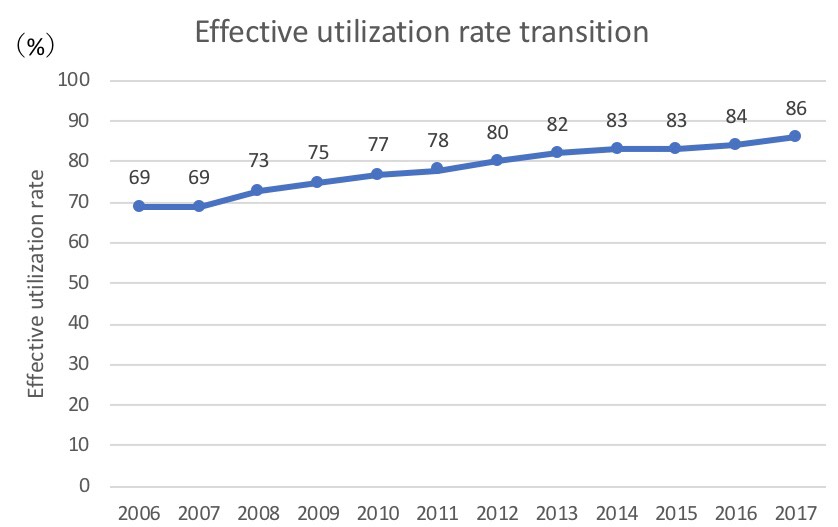Causes and reasons for plastic waste
About recycling
Many people sort out plastics and put them out as garbage for recycling. Figure 1 shows a simplified view of the destination of plastic wastes from homes. In fact, not all plastic wastes are used effectively because waste is generated in the process of recycling, but many plastic wastes are effectively used in some way. So, what kind of recycling makes plastic wastes effectively used?
There are three main types of plastic recycling.
1.Material recycling
2.Chemical recycling
3.Thermal recycling
Plastic recycling methods
This is a method of melting plastic wastes and regenerating it into plastic raw materials and plastic products. It is also called "material recycling". In material recycling, egg packs, detergent bottles, carpets, etc. are made from PET bottles, and the trays are recycled trays and stationery.
This is a method of recycling plastic wastes into plastic raw materials by chemically decomposing waste plastic. At Chemical Recycling, plastic wastes are converted into blast furnace raw materials to recycle PET bottles to PET bottles and to use them as reducing agents that remove oxygen from iron oxide, which is the main component of iron ore at steelworks.
It is a method of recovering heat from plastic wastes as solid fuel or heat from incineration. We use plastic wastes and paper wastes as raw materials to make solid combustible RPF and the recovered energy for power generation and heating.
Figure 2 shows the percentage of effective usage of plastic wastes by recycling methods in 2017. Looking at the methods, it can be seen that the recycling ratio increases in the order of thermal recycling, material recycling, and chemical recycling. Figure 3 shows the change in the effective utilization rate of plastic wastes from 2006 to 2017. It can be seen that the effective utilization rate is more and more increasing every year along with the improvement of recycling technology.
Though the recycling rate of plastic wastes in Japan is 86% (2017), how about the world? According to Plastics Europe, 31.1% of plastics produced in Europe are recycled and 41.6% are used as energy. Compared to not only in Europe but also in the United States and around the world, the recycling rate in Japan is high, which is 87%. However, in reality, is that there are different recycling standards between the world and Japan. According to global standards, material recycling and chemical recycling, which are recycled once again as products, are referred to as "recycling." However, in Japan, material recycling, chemical recycling, and thermal recycling are combined into "recycling." As figure 2 shows, thermal recycling accounts for nearly 68% of Japan's recycling, so some foreign countries and people have criticized Japan for regarding thermal recycling as the way of recycling.
Though the recycling rate of plastic wastes in Japan is 86% (2017), how about the world? According to Plastics Europe, 31.1% of plastics produced in Europe are recycled and 41.6% are used as energy. Compared to not only in Europe but also in the United States and around the world, the recycling rate in Japan is high, which is 87%. However, in reality, is that there are different recycling standards between the world and Japan. According to global standards, material recycling and chemical recycling, which are recycled once again as products, are referred to as "recycling." However, in Japan, material recycling, chemical recycling, and thermal recycling are combined into "recycling." As figure 2 shows, thermal recycling accounts for nearly 68% of Japan's recycling, so some foreign countries and people have criticized Japan for regarding thermal recycling as the way of recycling.
Then, is thermal recycling really meaningless? Let’s think about the effects of thermal recycling in the "For solving these problems".


